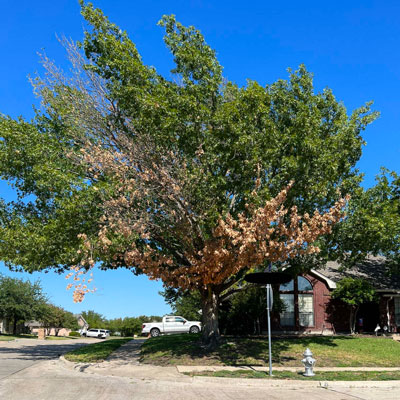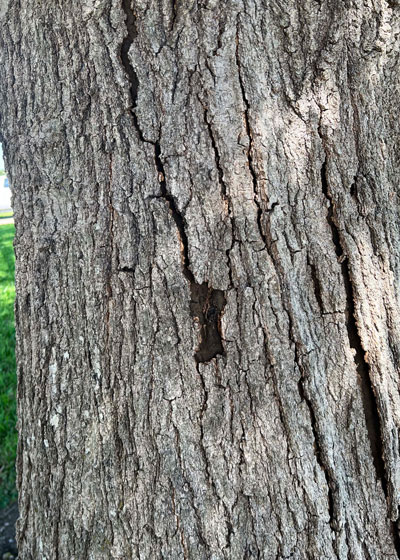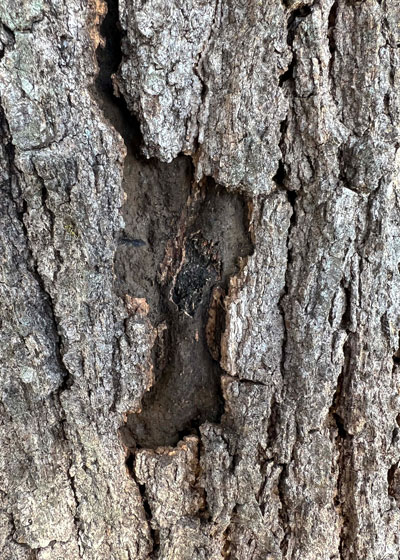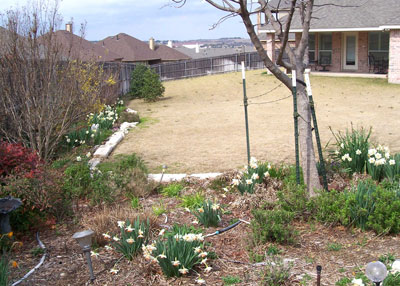Q&A – Ask Neil: December 7, 2023
(Please read these instructions carefully.)
Before you post your question, please look at recent issues to see if someone else has already asked it. You might find your answer there.
How to submit your question…
(Note: You may need to allow a pop-up window to come up in order to get the link for sending your photo(s). If you have already submitted your question and didn’t see the pop-up window, please click here.)
• Click the link provided below to post your question. After you submit your question, a new window will pop up giving you the address to which you can e-mail a SHARP, HIGH-RESOLUTION PHOTO to accompany your question. Please DO NOT SEND THUMBNAIL PHOTOS in case I need to zoom in to see things.
• Click here to post your question.
• Please ONLY POST YOUR QUESTION ONE TIME. We can only accept a set number of questions each week, and when we get duplicates it costs other people their chances.
• One question per reader, please.
• Please use this only for posting questions – not for standard emails.
• Watch for your answer in the following week’s e-gardens.
• I choose those of greatest general interest. For example, plant IDs seldom make the cut.
• I must have your first name or initials.
• I must have your city or county. (Texas is a very large state.)
QUESTION 1
IS MY RED OAK GOING TO DIE?
Question: In late September/early October the lower leaves on my 30-year-old red oak started turning brown. By late October it became noticeable that the bark was starting to soften and crack. I’m wondering if the tree has Hypoxylon canker and if it will die? Scott M., Benbrook.



Answer: You need to have a certified arborist look at your tree as soon as possible. Since you are in the Metroplex, I’m going to recommend our advertiser here in e-gardens, Arborilogical Services. As I say on the air, “they are the only people I will ever allow to touch my trees at our house.” They have a plant pathologist who specializes in oak diseases on their team. If you have a certified arborist who is equally competent that you currently use, by all means use their services. Otherwise, these folks are available and eager to help.
I’m not sure whether this is Hypoxylon canker or decay perhaps resulting from radial shake from the cold damage of February 2021. However, it’s obvious that there is serious deterioration of the internal tissues. That’s what causes the soft bark and blackened, wet wood. You and the arborist will want to monitor this tree closely. There is a great deal of weight being carried by the trunk. If it is severely compromised, you may have to take drastic action even before spring. You don’t want it to fall. It could cause injury and do serious damage. It’s going downhill so quickly that I suspect it’s in very bad shape internally. I’m sorry to have to write that.
QUESTION 2
I AGREE WITH YOU ON THE NEW USDA MAP.
Question: I don’t have a question, but I completely agree with you on your opinions on the new USDA map. Clearly, no one who worked on the new map lives in our area. Remember the “cobblestone ice” year? I was a landscape architect at Covington’s in Rowlett for 7 years. We are not Zone 8B! Linda L., Plano.
Answer: I guess they just left the lines on the map up to where their computerized temperature data fell. The problem was all those warm winters we had in the early part of this century. They really skewed things northward, enough so that we’re all thinking we can wear bathing suits all winter. Thanks for the validation.
QUESTION 3
SPREADING ROSES OUT HELPS WITH ROSE ROSETTE DISEASE
Question: Appreciated the article on rose rosette virus. Dr. Mark Windham, retired from RRD research and past president of our Holston Rose Society (Knoxville, TN) says that research is showing that spreading roses out among other plants (including taller grasses) helps. Brian T., Knoxville TN.
Answer: Thanks, Brian. Dr. Windham was recognized by the American Rose Society this past June with the Joseph and Marion Klima Medal for Excellence in Rose Education. He is Professor Emeritus in Plant Pathology from the University of Tennessee, so his suggestions are backed by extreme facts. In the June news release of the award, the ARS says, “Windham is considered the country’s leading authority on rose rosette disease.”
We in the DFW area have felt that the surge in RRV in our commercial landscapes was largely due to the massed plantings of landscape roses, especially Knock Outs, plant-to-plant and by the hundreds. It made it so easy for the virus to spread. Dr. Windham’s suggestion makes all the sense, whether separated by grasses or by other landscape plants.
QUESTION 4
HOW CAN WE GET RID OF CHINESE PISTACHIO SEEDLINGS?
Question: We have had this Chinese pistachio for 17 years. We tire of pulling all its seedlings out of the garden. The tree, as you can see, is not in the lawn, so mowing and weed-whacking are not viable options. The area beneath the drip line gets mulch, but not enough to prevent sprouts. Do you have any suggestions? Kirk McG., Far West Fort Worth (west of White Settlement). (Photo is from several years ago.)

Answer: Without seeing things as they exist now it’s a little difficult to answer you, but I would suggest using a thicker, rather “fluffy” mulch put out 2 inches deep. Shredded tree leaves would be ideal. You don’t want anything that’s going to pack down and compact. As the seeds start to develop in the spring, use a sharp hoe to turn the mulch. You won’t have to do any actual chopping. Just disturb the seedlings enough that their roots are exposed. That would be one option – one that I’ve used many times.
Another thing you could do would be to use a wick-type applicator to apply a broadleafed weedkiller (containing 2,4-D). They’re shaped somewhat like a hockey stick. The herbicide goes into the head of the stick and can then be wiped across the seedlings. Or, if you have no groundcover or low shrubs, you could use a pump sprayer under low pressure to apply a 2,4-D herbicide to the tiny seedlings. I would look for a product that only contains 2,4-D since it is not active in the soil. Apply it only on a still day so there won’t be any drift due to wind and remember to maintain that low pressure coming out of the nozzle. Once you use a tank sprayer for a weedkiller, mark the sprayer so you only use it for herbicides thereafter.
QUESTION 5
WHAT CAN WE PLANT TO REPLACE SHRUBS WE LOST IN THE DROUGHT?
Question: I’m on my neighborhood landscaping committee. We lost so many plants in the drought this year. That included 8 Nellie R. Stevens hollies (2 by each of our entrance signs). What would you recommend for replacements since they can’t be watered daily once they’re set out? Some of our plants have been replaced more than once and still don’t make it due to drought. Rebekah C., Denton County.

Answer: Anyone who landscapes in Texas has lost new plants due to letting them get too dry. But before I give you an answer, please let me establish a couple of facts that almost any nursery professional would agree with.
(1) Hollies are just about the best landscape plants for Texas gardens. If you have a type that’s suited to your soils, it needs to be near the top of your list of options.
(2) Like all living beings, plants (including hollies) must have water to survive. You can’t set any plant out and expect it to survive without occasional irrigation.
(3) Hollies can pass the point of no return without our knowing it. They don’t wilt noticeably. They merely take on a very slight change in leaf color. Unless you know what you’re looking for, it’s easy to miss it.
(4) You certainly don’t have to water new plants “every day” (to use your words). I’ve learned (the hard way) that new plants can get by just fine if they’re watered heavily three times per week in the hottest of weather. But that’s not with lawn sprinklers, and it’s certainly not with drippers. You need to put gallons of water on each plant – an amount equal to the size of the container from which it was planted.
All of that said, your Nellie R. Stevens hollies are, in my opinion, your best choice for large shrubs for your area. Yaupon hollies, Warren’s Red possumhaw hollies, and Oakland hollies would be good as well. For larger plants, eastern redcedar junipers or Little Gem southern magnolias are good. For shorter (to 10 ft. tall): Willowleaf hollies. And don’t overlook tree-form crape myrtles. In the proper settings they can be spectacular. Choose a stunning color. I’m especially fond of Lipan and Catawba, both gorgeous lavender-purples.
QUESTION 6
ARE THERE ANY GOOD “TABLETOP” CHRISTMAS TREES THAT WILL SURVIVE OUTDOORS?
Question: I love little tabletop Christmas trees, but I hate the wastefulness of just disposing of them after Christmas. In the past I’ve tried unsuccessfully to plant them. Are there any varieties other than rosemary that can be transplanted into the garden and survive? Rachel A., Comal County.
Answer: Every year I write warnings about plants that get sold as living Christmas trees, whether for use on tables or set full-sized on the floor. So many types that won’t grow outdoors get sold. Good for you for thinking about it ahead of time.
You may need to be a bit innovative in your selections. I see Japanese boxwoods that have been sheared conically for use as Christmas trees. Tie small red berries and bows onto its twigs and you have instant decoration.
You could also get a small juniper, even to the point of buying an oddly shaped one and training it as a bonsai, then putting miniature ornaments and battery-powered lights on it.
How about a small decorative wrought iron tree frame with tiny tillandias tied to it? Or a fig ivy growing up and over it? (You’d have to start now for next year on that one.)
One of the secrets in having a living Christmas tree indoors is to shorten its stay inside. Conditions indoors are warm and dry, and plants acclimate to those conditions. When we set them out into the elements they often go downhill rapidly. Move your plant to a bright, cool spot whenever possible.
